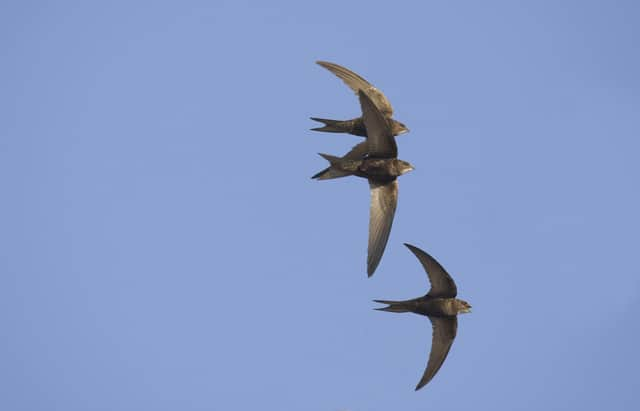Swift nesting boxes showing signs of success


Swifts are among the most endangered birds in the UK and almost 60% of the population has disappeared across the last 25 years.
Swifts pair for life and are loyal to their nest sites – returning year after year to nest in exactly the same spot. This makes conserving existing colonies the key to their protection. However, as traditional buildings are renovated and gaps are filled in, nest sites are fast disappearing.
Advertisement
Hide AdAdvertisement
Hide AdIn the Kellands Road project by Aberdeenshire Council, 18 swift nesting boxes were added in December 2022 to three blocks of flats with 20 nesting spaces and entrance holes created in new soffits (the underside area that spans from the wall exterior to where the edge of the roof begins).
When swifts returned to Inverurie 7 of the 18 nest boxes were in use this season.
Swift boxes are now due to be put up at the Community Centre and Sherrif Court in Stonehaven to help supplement the existing nesting sites at these locations.
Aberdeenshire Council’s Sustainability Committee Chair, Councillor Sarah Dickinson, said: "Having boxes already in use is a brilliant outcome for swifts and is helping to secure Inverurie as a centre for swift nesting in the future.
"Our thanks to the North East Scotland Swifts group for the enthusiasm, help, and advice with this project. It is a welcome development that the project has supported a wider rollout into the Stonehaven area."
Please send any records of swift sightings to The North East Scotland Biological Records Centre (NESBReC), including accounts of nesting colonies at nesbrec.org.uk. Doing so will support the work to protect and secure nesting colonies for the future.
Swifts nest in buildings, preferring old, tall buildings like churches and warehouses but also blocks of flats and houses, but they do not make any mess on the side of buildings and do not move around in roof spaces, nor do they leave droppings.
Nest sites are generally over five metres from the ground. When leaving the nest, the birds simply take to the air from the entrance. When young birds leave the nest, they can spend two or three years in the air—eating and sleeping on the wing before returning to breed.